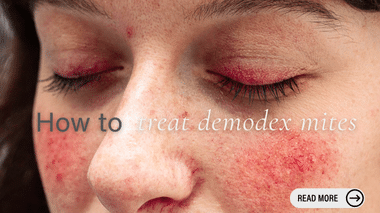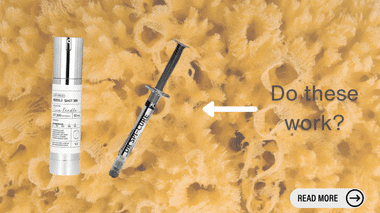
Spicules explained: All you need to know about this skincare trend


Every so often, skincare serves us a trend that sounds almost too strange to be real. Currently, that spotlight is on spicules. If you’ve spent time on TikTok, you may have come across the VT Reedle Shot, or heard murmurs about DR SPI CURE by Dr Esthe, a pharmaceutical Korean line making waves in Asia.
To many, the thought of deliberately applying microscopic needles to the face sounds intimidating. Why would anyone want that? And yet, the fascination grows, because spicules promise something unusual: the possibility of turning your daily serum into something that behaves more like a treatment.
As a doctor, I’ve had patients ask me about spicules with curiosity in their eyes and hesitation in their voices. Let’s walk through what they are, what they can and cannot do, and whether they deserve a place in your routine.
Spicules are microscopic, needle-like structures most commonly derived from the endoskeletons of marine sponges found in deep waters. If you imagine a sponge’s skeleton under a microscope, you’d see a forest of crystalline shards – these are the spicules. In skincare, they are purified, refined, and suspended in creams, essences, or ampoules. On ingredient lists, they may appear under the names “sponge” or “hydrolysed sponge.”
When you massage a spicule product into the skin, those crystals penetrate very superficially – about 0.1 to 0.3 millimetres deep. That isn’t enough to cause bleeding, but it is enough to break through the skin’s natural outer wall, known as the stratum corneum. This layer of compacted dead cells and lipids is what protects us from pollutants, infections, and UV rays – but it also acts as a barrier, making it difficult for skincare actives to penetrate.
Spicules change that by creating microchannels in the stratum corneum. In layperson’s terms, they create tiny passageways that enhance the skin’s permeability, allowing serums and ampoules to work effectively where they’re needed.
Additionally, spicules serve as a form of mechanical exfoliation, gently helping to shed rough, dull surface cells as they remain in the skin until they are eventually shed through natural turnover – a process that takes four to six weeks.
Spicules are not a miracle cure, but they can help make skincare work effectively.
For acne-prone skin, spicules can help transport anti-inflammatory or antibacterial actives into the epidermis earlier in a pimple’s cycle, making them helpful against deep, forming lesions.
For pigmentation, they can encourage quicker shedding of pigmented cells, especially when paired with brightening agents like vitamin C or niacinamide.
And for early fine lines, patients sometimes report that their skin looks smoother – not because the spicules themselves erase wrinkles, but because active ingredients penetrate effectively.
The most consistent result is an improvement in skin texture and radiance. Patients often describe their skin as smoother and brighter after using products containing spicules. Still, these changes are usually modest.
If someone expects spicules to deliver the dramatic results of lasers or in-clinic microneedling, I would remind them that spicules are supportive tools, not transformative procedures.
Here’s where the picture becomes more complex. Spicules are relatively new to dermatology, and the amount of robust research is still limited. Much of the data comes from animal studies, often using spicules from the Halicona species of sponge. These studies found that microspheres improved the uptake of large molecules, such as RNA and growth factors, in pig skin by creating microchannels.
With human skin, evidence is sparse. A small Korean study involving 20 participants examined the effect of spicules and found an improvement in wrinkles and dermal density in individuals who used spicules with growth factors, compared to those who used growth factors alone.
However, the study did not control for lifestyle or skincare habits, so the results must be interpreted cautiously. Reported side effects were mild, usually transient, and included redness and prickling sensations that resolved within minutes.
These findings are encouraging, but they also highlight the need for more research. For now, spicules are best described as promising but not yet definitively proven.
Spicules are often described as “nature’s answer to microneedling.” While both create controlled micro-injuries to stimulate renewal and enhance absorption, they are distinct from each other.
Microneedling is a clinical procedure performed under sterile conditions, often with a topical anaesthetic, and can reach depths of up to two millimetres. It stimulates collagen production and remodelling, making it effective for scars, wrinkles, and skin laxity.
Spicules, by contrast, remain superficial. They penetrate only 0.1 to 0.3 mm and stay in the skin until they are naturally shed. Their effects are limited to exfoliation and enhanced product penetration. They cannot remodel skin or induce collagen on the same scale.
For those seeking a middle ground between home skincare and medical treatments, a derma roller facial is often a safer compromise. During these treatments, we use sterilised devices to create microchannels and infuse serums. I do not recommend using DIY rollers at home due to the risks of infection and scarring.
If spicules really worked as dramatically as marketing sometimes suggests, they would be everywhere. But the reality is more nuanced.
Firstly, as mentioned, science is still limited. Extensive, peer-reviewed studies are needed before clinicians can confidently recommend them.
Secondly, their mechanism carries inherent risks. Because they pierce and remain in the skin until it turns over, they can prolong irritation – particularly in sensitive or inflamed skin, such as eczema, rosacea, or active acne. Unlike chemical exfoliants that dissolve away gently, spicules remain lodged in the skin till the end of the natural shedding process (4-6 weeks on average).
And while brands claim spicules can improve wrinkles, elasticity, moisture, pigmentation, and overall barrier strength, Spicules are not a replacement for procedures that remodel tissue or lift sagging skin.
For resilient skin, spicules can be a helpful boost. But for sensitive or inflamed skin, the risks can outweigh the benefits. If you do try spicule-infused products, introduce them gradually, perform a patch test, and support your barrier with soothing moisturisers.
Sunscreen is also non-negotiable afterwards, as the skin is more vulnerable to UV after exfoliation. Using calming gels or barrier creams can also help reduce lingering tingling or redness.
From my perspective, spicules are an interesting innovation. They offer a clever way to increase the absorption of active ingredients and to provide a subtle push for renewal. For the right patient –someone with sturdy, tolerant skin and realistic expectations – they can be a novel addition.
But they are not a cornerstone of treatment. Their effects are modest, their sensation is not universally pleasant, and their risks are higher in compromised skin. I don’t recommend them broadly, nor do I use them myself, but I recognise their value as part of the broader landscape of skincare.
Spicules occupy a unique place in beauty: more than just a serum, but not quite a medical treatment. They highlight how skincare is evolving to mimic procedures while remaining accessible at home.
If you are curious about trying spicules, do so carefully, understand what they can and cannot achieve, and always protect your skin barrier. And if you’re unsure, don’t navigate alone. That is where professional guidance matters.
Are spicules, derma roller facials, or in-clinic treatments right for you? Visit us for a consultation, and together, we’ll find out what’s best for your skin.
Like what you read? Share them!